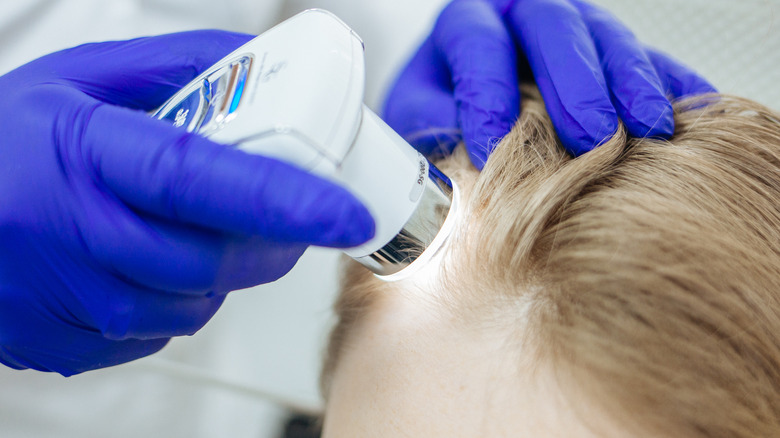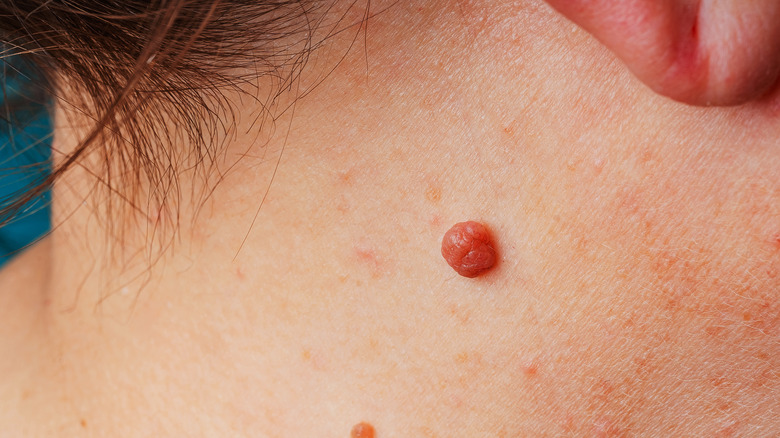What It Means When You Have A Mole On Your Scalp
When it comes to health problems, moles are a fascinating genre of issues. They can be benign or indicative of a serious problem, and there's no way to tell unless you seek medical attention. Still, moles can mean different things depending on their location on your body. What moles on your forehead mean is different than what a mole on your behind means, and it's even important to understand the difference between a mole vs. a beauty mark. Some even believe that there are significant spiritual meanings behind certain moles.
Moles can form on any part of the human body, and most of the time, there's nothing to worry about. Moles are so normal that most adults will have between 10 and 40 moles in their lifetime, according to Healthline, with the common mole being less than a quarter of an inch in size. Moreover, common moles are round or oval in shape with distinct edges, even coloring, and smooth surfaces, though they typically dome in shape. Most moles are shades of brown, tan, and pink in color, but discoloration could mean something is wrong with it.
If you're brushing your hair and notice a mole on your scalp, make sure to pay close attention. Here's why.
Cancerous scalp moles are more lethal than other melanomas
According to Healthline, one of scalp moles' possibilities is that they're early signs of melanoma, a harsh skin cancer. Moles could indicate other skin cancers, too. Skin Check adds that other serious scalp cancers include Basal cell carcinoma and squamous cell carcinoma, both of which can be recognized by skin discoloration and the formation of multiple moles, though just one could mean one of these cancers is forming.
Like with any other area of your body, moles on your scalp are typically benign, and they most often form before age 30, per Tiege. However, you should know that moles can change shape and color, so getting them examined by dermatologists is always recommended, especially if they change while you're over the age of 50.
Unfortunately, cancerous moles on the scalp are more lethal than moles on other parts of the body, specifically when the mole has melanoma, Skin Check notes. This is most often because scalp melanomas are diagnosed later than others, so they get treated late and can prove deadly. Skin Check further notes that the scalp's blood vessels and lymphatics might incubate melanomas better than other areas of the body. Ultimately, keep a watchful eye on any moles on your scalp (or anywhere), and seek medical attention if you notice any changes in your mole's appearance.
And in case you're curious about the symbolism of a mole on your head, it depends on its placement: a mole on the right side of your head will set you up for career success, per Onmanorama, and one on your left may ensure you'll always be traveling (but you'll be strapped for cash).

